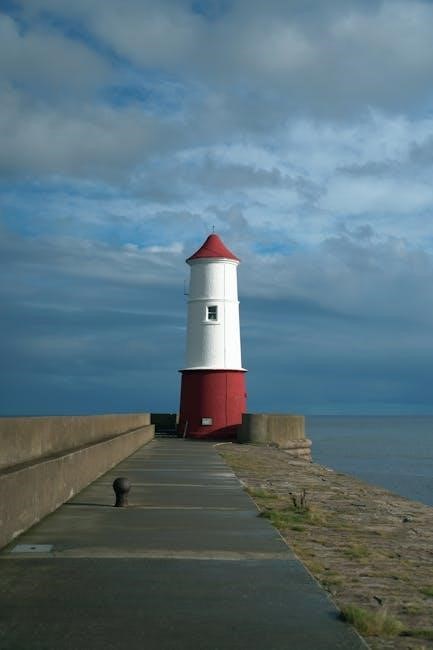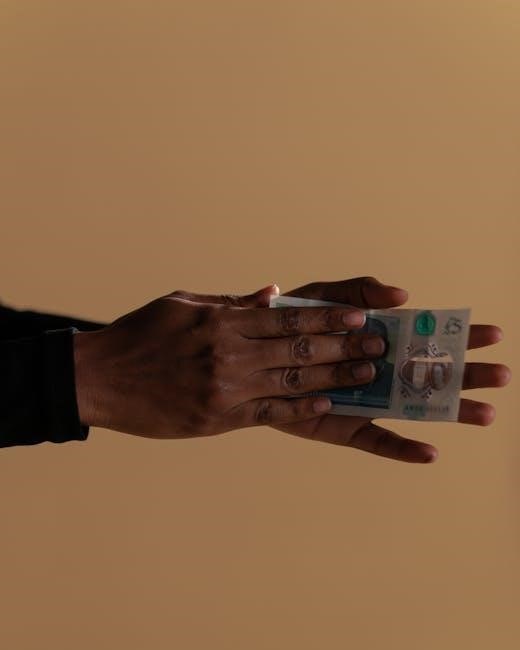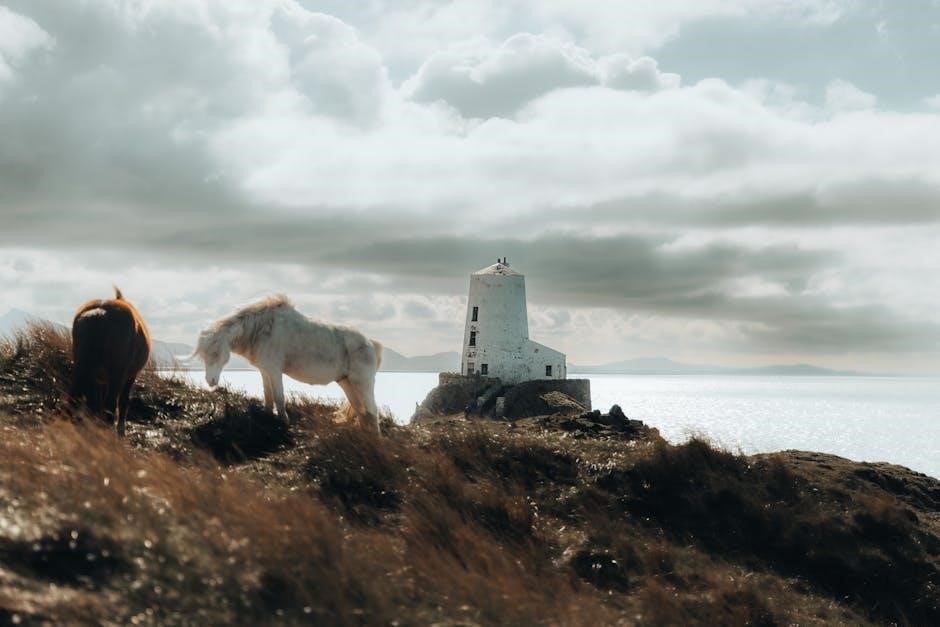Steiff Bears Value Guide UK: An Overview (as of 11/20/2025)
Steiff bears retain significant value, influenced by age, rarity, and condition. Identifying hallmarks – ear buttons and tags – are crucial for accurate UK market valuation today.

Steiff bears, originating in Germany in 1880, quickly became iconic plush toys, renowned for their quality and craftsmanship. Their collectibility blossomed from the early 20th century, fueled by innovative designs and enduring appeal. Today, the UK market demonstrates a strong and consistent demand for these vintage and modern treasures.
Early Steiff bears, particularly those pre-dating World War II, command the highest prices, often exceeding several thousand pounds depending on rarity and condition. The presence of original tags and the iconic ear button are paramount for establishing authenticity and value.
Beyond vintage pieces, limited edition and artist-designed Steiff bears also attract collectors, offering a diverse range of investment opportunities. Understanding the historical context, manufacturing details, and current market trends is essential for navigating the world of Steiff bear collecting in the UK.

Identifying Your Steiff Bear
Steiff identification relies on examining key features: the ear button, chest or ear tags, and materials used. These details unlock the bear’s history.
The Importance of the Ear Button
Steiff’s iconic ear button is paramount in identification and dating. Introduced early in production, its design evolved significantly over time, acting as a crucial chronological marker. A distinctive feature, the button’s presence confirms authenticity, distinguishing genuine Steiff creations from imitations. Examining the button’s style – from the early brass “FF” to later variations – helps pinpoint the bear’s manufacturing period.
The button isn’t merely decorative; it’s a historical record. Changes in material, shape, and lettering correlate with specific eras. Understanding these nuances is vital for collectors and valuers. A missing or replaced button drastically impacts value, raising concerns about originality. Therefore, the ear button serves as a primary indicator of a Steiff bear’s age and provenance within the UK market.
Decoding Steiff Button Types and Dates

Early Steiff bears (pre-1964) typically feature metal buttons. The “FF” button, representing Margarete Steiff’s initials, evolved through several iterations. Brass buttons were common initially, transitioning to steel post-WWII due to material shortages. Button color and font variations also indicate age; earlier buttons often exhibit a richer, warmer tone.
Post-1964, plastic buttons became prevalent, though metal buttons continued in limited editions. Identifying the button’s backing material – cardboard versus felt – is also key. Detailed guides, like Linda Mullins’ work, provide comprehensive charts correlating button types with production dates. Accurate dating requires careful observation of these subtle details. Understanding these nuances is crucial for establishing a Steiff bear’s value within the UK collector’s market.
Understanding Steiff Tags
Steiff tags are vital for authentication and valuation. Early bears often had chest tags, attached with string or ribbon, providing model numbers and material information. These are easily lost, diminishing value if absent. Later, ear tags became standard, offering similar details but proving more durable. The presence of both tags significantly increases a bear’s worth in the UK market.
Tag variations – color, font, and wording – correspond to specific production periods. Collectors scrutinize tag details for consistency and authenticity. A tag’s condition impacts value; pristine tags command higher prices. Identifying the collection a bear belongs to, as indicated on the tag, is also important. Careful examination of tags, alongside the ear button, is essential for accurate Steiff bear identification.
Chest Tags vs. Ear Tags: What They Indicate
Steiff chest tags, prevalent in earlier production, were more susceptible to damage or loss, impacting current UK valuations. They typically detailed the model and material, offering initial identification. Ear tags, introduced later, proved more resilient and became a standard feature, providing similar information but with greater longevity.
The presence of a chest tag alongside an ear tag is highly desirable, signifying originality and careful preservation. However, a well-preserved ear tag alone is often sufficient for identification. Understanding the era a bear originates from helps determine which tag type should be present. Collectors assess both tag types for authenticity, considering font styles and material consistency. The tags help classify bears into ‘Originals’ or ‘Friends’ collections.
Identifying Materials Used in Steiff Bears
Steiff historically employed diverse materials, significantly impacting UK market value. Early bears (pre-1945) frequently utilized mohair, prized for its luxurious texture and durability. Felt was commonly used for paws and facial features, though its condition degrades over time. Post-war bears saw increased use of synthetic plush, affecting collectibility.
Identifying the material is crucial for authentication. Mohair exhibits a distinct sheen and pile, while synthetics feel different to the touch. Wood wool stuffing, common in older bears, adds value if original. Examining the material’s wear – thinning, fading, or damage – informs condition assessment. Knowing material evolution aids in dating a bear and understanding its inherent worth within the UK collector’s landscape.
Mohair, Felt, and Other Fabrics
Mohair, the dominant early fabric, dictates premium values for pre-war Steiff bears in the UK. Its quality varies; longer, lustrous mohair commands higher prices. Felt, used for paws and faces, deteriorates, impacting value – pristine felt is rare. Later fabrics include synthetic plush, generally lowering collectibility.
Beyond these, some bears feature corduroy or velvet, adding unique character. Identifying fabric type requires close inspection: mohair has a distinct sheen, while synthetics feel different. Originality is key; replacements diminish value. Assessing fabric wear – thinning, fading, or moth damage – is vital for accurate UK valuation. Understanding these materials helps determine a bear’s authenticity and overall worth.

Key Factors Affecting Steiff Bear Value
Steiff bear value hinges on rarity, condition, and authenticity. Originality significantly impacts UK market prices, alongside demand for specific models and historical significance.
Rarity and Limited Editions

Steiff’s production history, spanning over a century, means certain bears are exceptionally rare, dramatically influencing their value within the UK collector’s market. Limited edition releases, particularly those created in recent decades, command premium prices due to their inherent scarcity. Pre-war Steiff bears, especially those in excellent condition, are highly sought after.
The number of bears produced in a specific year or for a particular model directly impacts desirability. Bears created for special events or collaborations also tend to be more valuable. Identifying limited editions often involves checking for specific tags or certificates of authenticity. Collectors actively seek out these unique pieces, driving up demand and, consequently, their market value. Understanding production numbers is key to assessing a bear’s rarity and potential worth.
Condition and Restoration
Steiff bear value is heavily dependent on condition; even minor wear significantly impacts price within the UK market. Assessing wear and tear involves examining the mohair, felt, and stitching for damage. Originality is paramount – unrestored bears generally fetch higher prices than those that have undergone repairs. However, professional restoration by a qualified specialist can sometimes enhance value, particularly for severely damaged pieces.
Collectors carefully evaluate factors like fading, moth damage, and loss of stuffing. While minor imperfections are expected in antique bears, extensive damage diminishes worth. Attempts at amateur restoration often devalue a bear. Documenting any existing damage is crucial for accurate valuation and transparency during sales.
Assessing Wear and Tear
Steiff bear assessment requires detailed scrutiny of materials. Mohair pile wear, particularly on the paws and muzzle, is common and affects value. Felt should be examined for thinning, holes, or discoloration. Stitching integrity is vital; loose or broken seams detract from worth. Look closely at the eyes – are they original and securely attached? Any replacements significantly lower value.
Evaluate the stuffing for firmness and even distribution. Sagging or lumpy stuffing indicates wear. Check for moth damage, often appearing as small holes or thinning in the fabric. Document all flaws meticulously, noting their size, location, and severity. This detailed assessment informs accurate UK market valuation.
Originality and Authenticity
Steiff bear authenticity hinges on verifying original components. The ear button is paramount; mismatched or incorrect buttons raise red flags. Original tags – chest or ear – significantly boost value, but reproductions exist. Scrutinize materials; early bears used specific felt and mohair types. Examine stitching – Steiff employed distinct techniques.
Beware of repairs using non-original fabrics or materials. Restorations, while sometimes necessary, should be disclosed and ideally performed by specialists. Thorough research and comparison with documented examples are crucial. Consulting expert dealers or utilizing reputable identification guides, like Linda Mullins’, aids in confirming a bear’s genuine Steiff heritage within the UK market.

Popular Steiff Bear Models and Their Values (UK Market)
Iconic models like the 1904 bear (35PB) command high prices. Post-war and limited-edition Steiff bears also hold substantial value within the UK collector’s market.
Pre-War Steiff Bears (1902-1945)
Steiff bears produced before 1945 represent the earliest and often most valuable examples. Identifying these bears relies heavily on understanding the evolution of the ear button. Early bears featured simple metal buttons, transitioning to more elaborate designs over time. The presence of a felt or mohair body, coupled with a distinct button, is key.
Model 35PB, the iconic 1904 bear, is particularly sought after, with prices varying significantly based on condition. Bears from this era often exhibit wear consistent with their age, impacting value. Originality is paramount; any restoration should be carefully assessed. Chest tags, when present, provide valuable dating information. Pre-war Steiff bears are highly collectible within the UK, commanding premiums from dedicated enthusiasts.
Model 35PB – The Iconic 1904 Bear
Steiff’s 1904 Model 35PB is arguably the most recognizable early Steiff bear, and a cornerstone of any serious collection. Its value in the UK market is exceptionally high, dependent on condition and completeness. Original examples with intact ear buttons and, ideally, a chest tag, command the highest prices.
Identifying a genuine 35PB requires careful scrutiny. Features include specific mohair characteristics and a particular body shape. Bears in excellent condition, with minimal wear, can fetch substantial sums at auction. Restoration significantly impacts value; originality is prized. Understanding button variations and tag styles is crucial for accurate assessment. This iconic bear remains a highly desirable investment for collectors.
Post-War Steiff Bears (1946-1964)
Steiff bears produced between 1946 and 1964 represent a transitional period, with evolving designs and materials. Values within the UK market vary considerably based on model, condition, and rarity. Identifying these bears often relies on specific ear button types and tag variations, reflecting post-war manufacturing changes.
Bears from the 1950s and 60s frequently feature different mohair qualities and facial expressions compared to pre-war examples. Condition is paramount; well-maintained bears with original features command higher prices. Look for intact ear tags and assess any repairs or restoration work. Certain limited-edition or unusual colour variations can significantly increase collectibility and value within the UK.
Identifying Bears from the 1950s and 60s
Steiff bears from the 1950s and 60s present unique identification challenges. Ear buttons transitioned during this period; examining the design and font is crucial for dating. Chest tags became more prevalent, offering model numbers and collection information. Material analysis is key – mohair quality differed, and some bears utilized felt for paws and noses.
Look closely at facial features; expressions evolved, and stitching patterns varied. The presence of a button and a tag is common, but their combination helps pinpoint the production year. Condition significantly impacts value; original features and minimal wear are highly desirable within the UK collector’s market. Careful examination reveals subtle details aiding accurate identification.

Modern Steiff Bears (1964-Present)
Steiff bears produced from 1964 onwards demonstrate a shift towards limited editions and artist collaborations, impacting UK values. These bears often feature unique designs and higher-quality materials, commanding premium prices. Identifying these requires attention to specific collection details and artist signatures. The ear button design changed again, becoming more standardized, but still crucial for dating.
Limited edition certificates of authenticity are vital for verifying value. Modern Steiff also produces ‘Originals’ replicating classic designs, alongside contemporary creations. Condition remains paramount, but originality of design and rarity within the edition are key drivers of price in the UK market. Researching specific releases is essential for accurate valuation.
Limited Edition and Artist Bears
Steiff’s limited edition and artist bears represent the pinnacle of collectibility within the UK market, often achieving substantial values. These bears, frequently produced in numbered series, benefit from inherent scarcity and artistic merit. Artist collaborations, featuring renowned designers, significantly elevate prices, demanding careful authentication.
Original packaging, certificates of authenticity, and documented provenance are crucial for verifying value. Rarity within the edition – lower numbers are generally more desirable – plays a key role. Condition is paramount; even minor flaws can impact price. Understanding the artist’s reputation and the bear’s design influence also contribute to accurate UK valuation. Thorough research is essential for collectors.

Resources for Steiff Bear Valuation in the UK
UK collectors can utilize online auctions, specialist dealers, and comprehensive price guides – like Linda Mullins’ – to determine accurate Steiff bear values today.
Online Auction Sites (eBay UK)
eBay UK serves as a dynamic platform for both buying and selling Steiff bears, offering a broad spectrum of models and price points. Regularly monitoring completed listings is essential for gauging current market values, providing real-time data unavailable elsewhere. However, exercise caution; authenticity can be a concern.
Thoroughly examine photographs, scrutinize descriptions for details regarding the bear’s button, tag, and overall condition. Utilize eBay’s search filters to refine results by era, animal type, and price range. Comparing similar bears across multiple listings helps establish a fair market value. Remember to factor in shipping costs when evaluating the final price. Be aware that auction results can fluctuate significantly based on collector demand and the bear’s unique characteristics.
Specialist Steiff Bear Dealers in the UK
Engaging with established Steiff bear dealers within the UK offers expertise and assurance often absent in online auctions. These specialists possess in-depth knowledge of Steiff history, manufacturing nuances, and current market trends, providing accurate valuations.
Reputable dealers meticulously authenticate bears, assessing originality and identifying any restoration work. They can offer detailed provenance information, enhancing a bear’s value. While prices may be higher than auction sites, the peace of mind and guaranteed authenticity are invaluable. Seek dealers with strong reputations and demonstrable experience. Consider attending bear fairs and events where dealers showcase their collections, allowing for direct examination and expert consultation. Building a relationship with a trusted dealer is a worthwhile investment for serious collectors.
Steiff Identification and Price Guides (Books)
Comprehensive Steiff identification and price guides are essential resources for collectors in the UK. Linda Mullins’ guide, frequently cited, is a cornerstone for understanding Steiff’s history and recognizing variations. These books detail button types, tag evolution, and material changes, aiding accurate dating and valuation.
They provide extensive photographic references, enabling comparison with your bear’s features. While price guides offer a benchmark, remember market values fluctuate. Books help decipher complex details, assisting in authenticating your Steiff and determining its potential worth. Newer editions reflect current market trends. Supplementing book knowledge with online resources and expert opinions provides a well-rounded approach to valuation. A well-chosen guide is a valuable long-term investment for any Steiff enthusiast.
Where to Find More Information

Steiff’s official museum website and Linda Mullins’ detailed identification guide offer extensive resources for UK collectors seeking deeper knowledge and valuation assistance.
Linda Mullins’ Steiff Identification and Price Guide
Linda Mullins’ Steiff Identification and Price Guide is widely considered an essential resource for both novice and experienced collectors in the UK. Published regularly, this comprehensive guide meticulously details the history of Steiff, covering production techniques and the evolution of their iconic designs since 1902.
The book excels at assisting with accurate identification, focusing on crucial elements like ear buttons, chest tags, and material analysis. It provides detailed photographs and descriptions, enabling owners to pinpoint the age and model of their Steiff bears. Crucially, Mullins’ guide also offers valuable pricing information, reflecting current UK market values. Many collectors rely on this book to understand their inherited Steiff animals, appreciating its user-friendly layout and wealth of information. It’s a cornerstone for anyone serious about understanding and valuing these treasured collectibles.
Steiff Museum Website
The official Steiff Museum website (steiffmuseum.com) serves as an invaluable digital archive for enthusiasts seeking to understand the history and value of their Steiff bears within the UK market. It provides a deep dive into the company’s heritage, showcasing the evolution of designs and manufacturing processes from its founding in 1880.
While not a direct price guide, the website offers detailed information about specific models, materials, and production dates – all critical factors influencing value. Collectors can research the origins of their bears, learning about limited editions and historical significance. The site also features articles and resources on identifying authentic Steiff products, helping to avoid reproductions. It’s a fantastic starting point for research, complementing physical guides and auction site data for a comprehensive valuation approach.
